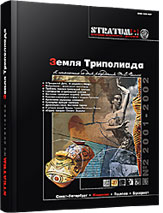Древнейшее археологическое стекло Восточной Европы (конец IV тыс. до н.э. – первая половина VII в. до н.э.)
The earliest archaeological glass in Eastern Europe (late IV mill. – first half of VII cent. B.C.)
Author(s): Anatoly S. OstroverkhovSubject(s): History, Archaeology, Ancient World
Published by: Издательский дом Stratum, Университет «Высшая антропологическая школа»
Summary/Abstract: The article gives a complex description of glass beads found on Bronze Age – Early Iron Age sites (late IV millennium B.C. – first half of VII c. B.C.) in Eastern Europe. In our classification, this is the first stage in history of glass and glasswork in the studied region. In its turn, it is divided into three periods: 1. Late Tripolje (late IV – middle III millennium B.C.); 2. Late Bronze Age (late III millennium – XIII c. B.C.); 3. transition from the Bronze Age towards the early Iron Age (XII – first half of VII c. B.C.).In late Tripolje, the studied territory registers spread of such type of glass which we attribute to the Black Sea glasswork «proto-school», with centres in Southern Trans-Caucasus and Anatolia. Specific feature of this type of glass is usage of ashes of some alkali-soil (except saltwort), or continental herbaceous (Na > K or Na:K >> equal), and also alloys of glass mass (even with absence of copper in glass) with arsenic.Glass beads are very rare finds on sites of Yamnaya, Catacomb, Middle Dnieper and Sabatinovka cultures. Cultural complexes of Mnogovalokovaya (multi-ridged) pottery culture so far have yielded only decorations of «Egyptian faience». We know the chemical composition of the decorations found in the late Yamnaya burial at the villate Verkhnetarasovka and on the Sabatinovka settlement Novokievka closer to the mouth of the Dnieper. The glass from Verkhnetarasovka follows the traditions of the Black Sea glasswork «proto-school», and is darkened to yellow colour by an antimony-acid litharge – Pb2Sb2O7. The glass from Novokievka follows the traditions of Near-Eastern school of glasswork. Production centres for both types should be looked for in the area of the Big Caucasus, Trans-Caucasus or Anatolia.Late Bronze Age – early Iron Age saw a rapidly growing consumption of glass by the local population. The assortment of products, however, remained rather limited. It is represented just by the beads of the simplest types. These processes are best to be seen on materials of the Belozerka culture in the Northern Black Sea region (XII-IX cc. B.C.). Glass beads are found practically in every burial, in quantities from 2 to 200 objects. Unlike other synchronous cultures, the habitat of the Belozerka culture so far has not yielded any hoard with glass. It is not excepted that the Belozerka population used glass beads as «primitive» money.Quite a big number (over 70 cases) of quantitative spectral analyses of Belozerka glass have been made so far. This glass consists of two components, produced from the ashes of some continental plants like straw of cereals and coloured mainly in turquoise-blue colour by alloy of tin bronze or, rarer, by pure copper. This chemical composition marks this glass off from the glass found in Egypt, Aegian area, Near and Middle East, Caucasus or Trans-Caucasus. This means that on the turn of II – I millennium B.C., there was at least one more school except the Egyptian and Near-Eastern glasswork schools known to the scientists. We called it the Belozerka school. Recently, glass analogous by its chemical composition to the Belozerka one was found on a number of sites in Central, Western and Southern Europe. R.H. Brill calls this glass «mixed-alkali glass» and maintains that it comes from the continental Europe. The area of such type of glassworks covers a large territory – from Scotland in the west, Northern Italy in the south to the mouth of the Dnieper in the east.Eastwards from the Dnieper – the habitation area of proto-Meotian, Early Coban, early Anan’in and some other cultures, and the territory of the Central Caucasus and in Trans-Caucasus, as well as in the Middle East, documents spread of glass produced in traditions of the Caucasian branch of the Near-East glasswork school in the studied time. Typical features of this branch are use of ashes of alkali-soil plants and antimonous (lead-antimony) combinations to colour and darken the glass in milk-white, yellow and green colours.The published materials present a special interest for historians of art, science and technology. They allow a deeper study of development of aesthetical processes, peculiarities of pre-scientific technical knowledge, and general knowledge of nature among the Old World population in the Bronze Age – early Iron Age not only on the territories of early civilisations, but also on primitive peripheries. They testify in favour of poly-centric theory of glasswork origin and support the important role of the continental Europe in this process.
Journal: Stratum plus. Археология и культурная антропология
- Issue Year: 2002
- Issue No: 2
- Page Range: 386-430
- Page Count: 45
- Language: Russian
- Content File-PDF

